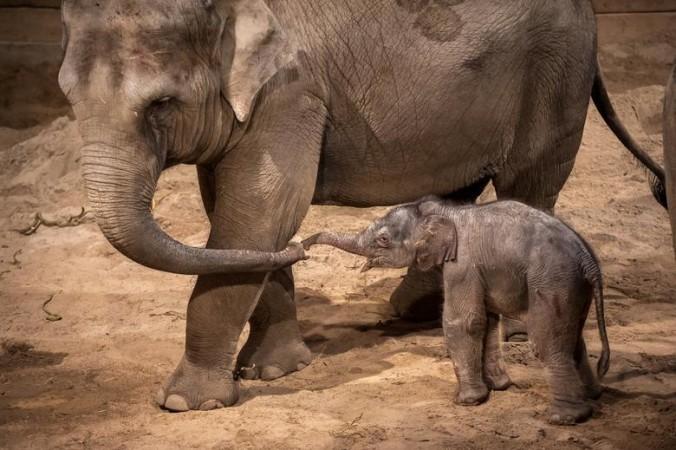On July 6, more than a week after one-and-a-half-year-old Sreekutty died of the herpes virus at the Kottoor elephant rehabilitation centre near Kappukadu, Kerala, another five-year-old jumbo Arjun reportedly succumbed to the virus.
According to reports, currently, three more calves at the centre are infected with the disease and are kept under observation. The rehabilitation centre that comes under the care of the Kerala Forest Department is home to nine elephant calves.

Once infected with the herpes virus, calves show up unusual signs like loss of appetite, sluggishness, mouth ulcers and oedema (head and trunk), leading up to internal bleeding, which eventually turns fatal within 48 hours.
Elephant researcher Dr Sanjeeta Pokharel mentioned that the disease that may not be as serious for adult elephants, but it could be fatal for the younger ones. In her blog post, she explained other symptoms of EEHV as swollen (cyanotic) tongue and blood in defecation. EEHV consists of 8 genotypes. But, in some elephants, especially young ones, it may cause EEHV-Haemorrhagic Disease (EEHV-HD) causing death.
Speaking to IBTimes about the disease and its cure, the researcher said, "There is no vaccination yet, however, a few scientists abroad are actively working on understanding this disease in elephants." She said that she is not aware of any such scientific study being conducted in India.
Recent case history of EEHV in India
In May 2021, a four-year-old elephant calf Hero allegedly succumbed to EEHV at a rescue centre in Kapilash, Dhenkanal district, Odisha. In 2019, Odisha had reported a similar outbreak of the herpes virus that claimed the lives of five jumbo calves. While four such deaths were disclosed at Nandan Kanan Zoo in Bhubaneshwar, one calf was found dead in the Chandaka forest.
A national committee of scientists and experts was proposed to be set up after this incident, to develop treatment protocols for the country, in case of future outbreaks, Dr S P Yadav, Central Zoo Authority (CZA) member-secretary had told the Indian Express in 2019.
In June 2021, CZA published a standard operating procedure (SOP) document on its website which serves as a guidance document to deal with the dreaded disease. The SOP was drafted with the efforts of veterinary experts and scientists from Assam, Kerala, Odisha among others.
No vaccine in India, US vaccines under study trial
According to the CZA official SOP document, in India, the incidence of EEHV-HD was first reported in 1997. Within the last 10 years, 59 fatal cases of EEHV disease in Asian elephants have been identified within the eight range countries. Twelve of these deaths were wild elephants.
While there is no vaccine developed in India, vaccines developed in the US are still under study. Since the virus has many strains and substrains, the full spectrum of a preventive vaccine needs to be developed.
CZA recommends six months quarantine for rescued jumbo before mixing
Though the disease can occur at any age group, the elephants that have the highest risk are young elephants aged between 2-8 years. An important point highlighted in the document suggests that an animal arriving through an exchange programme or any rescued animal should be properly quarantined for up to six months at a separate facility before mixing with an existing herd.
During this time, periodical screening of blood sample and trunk wash by PCR besides regular monitoring of vital signs has been suggested.

















